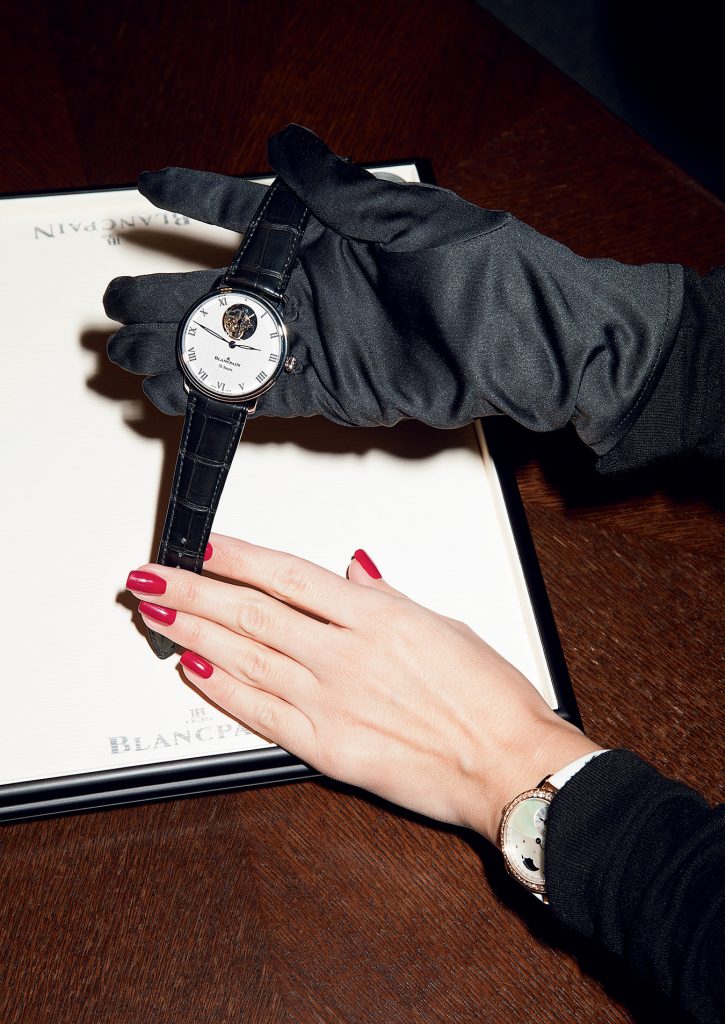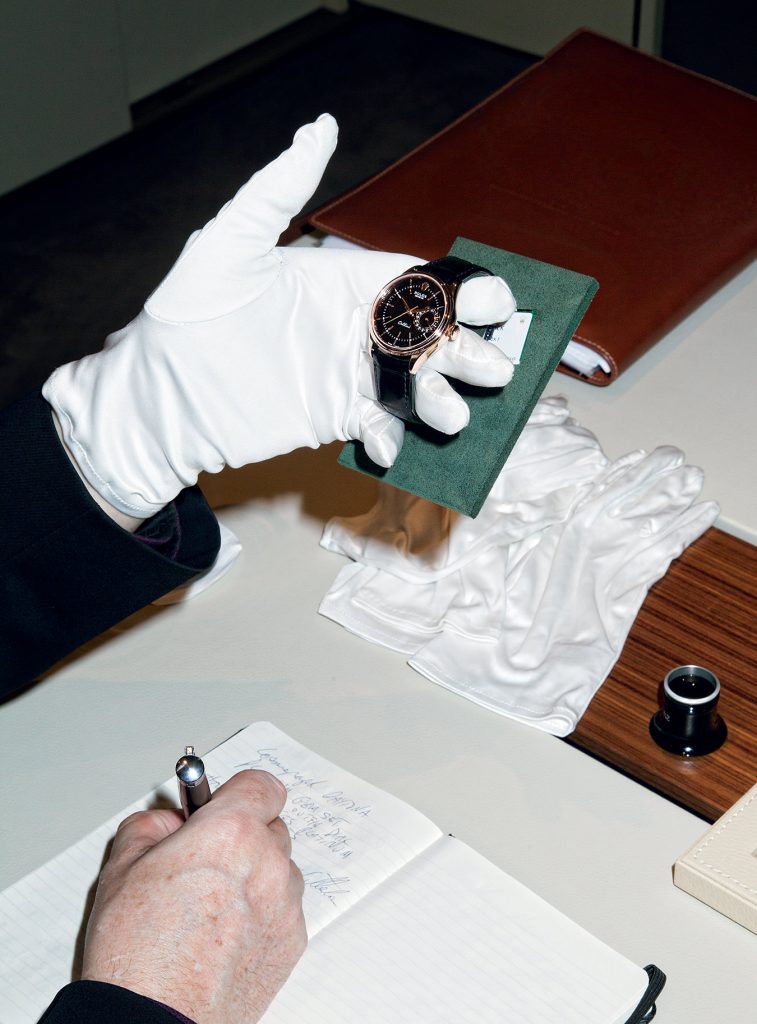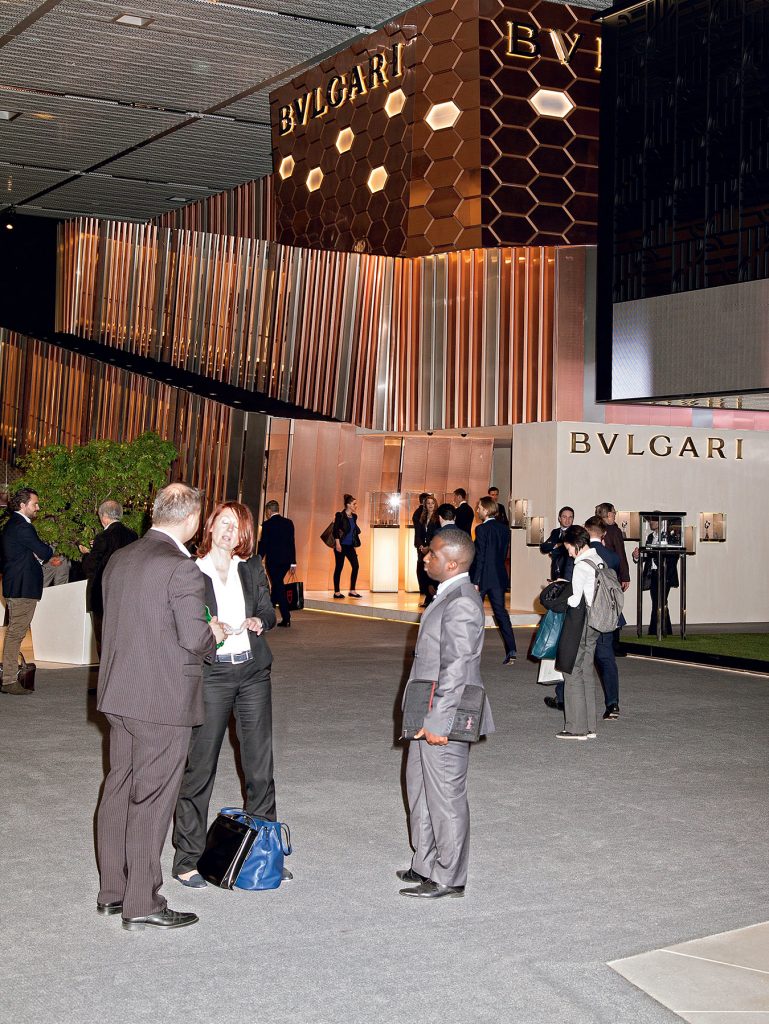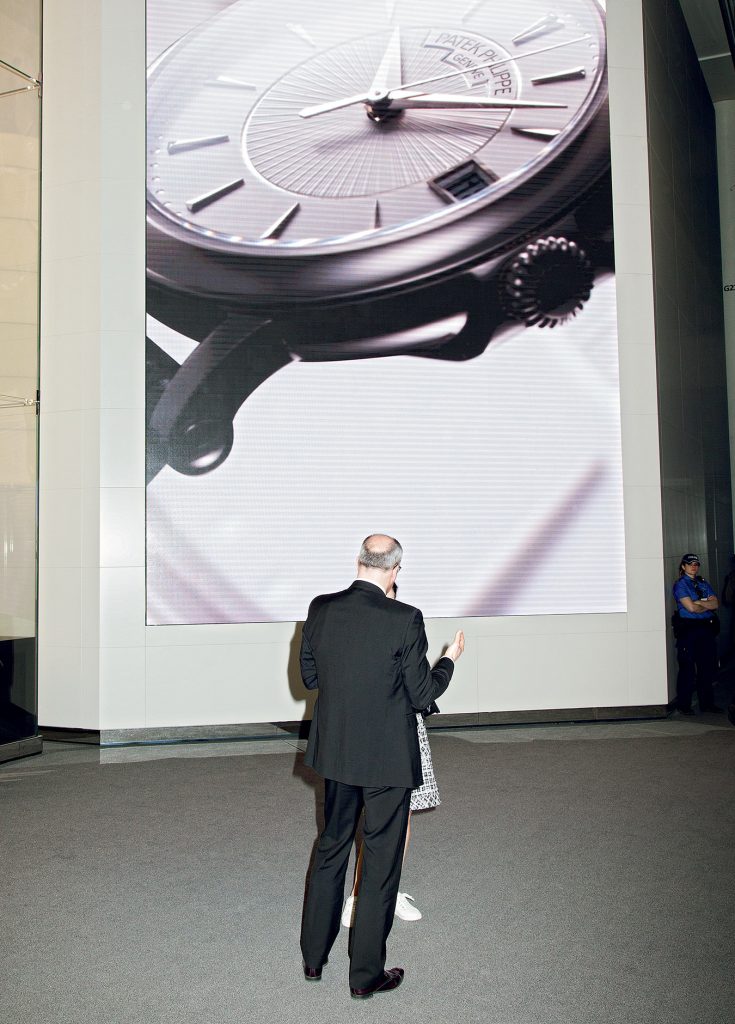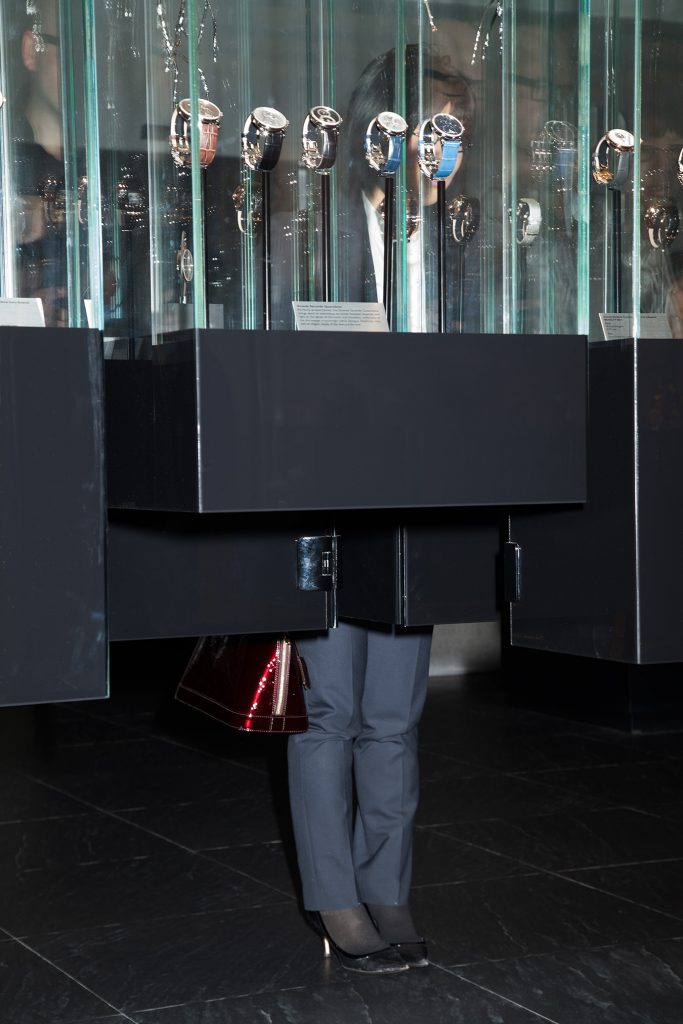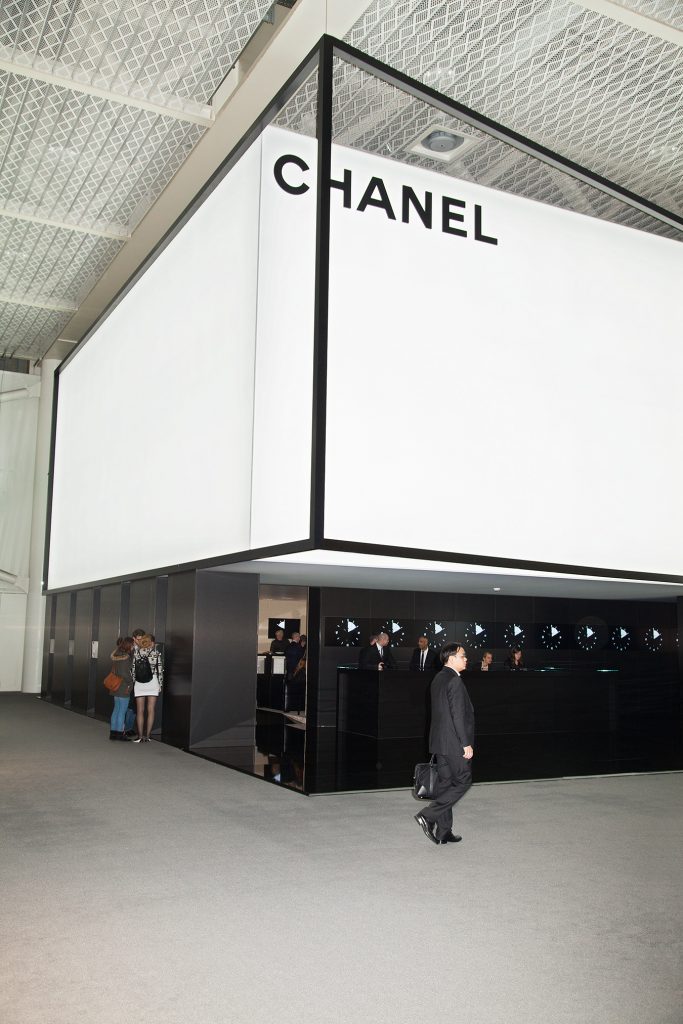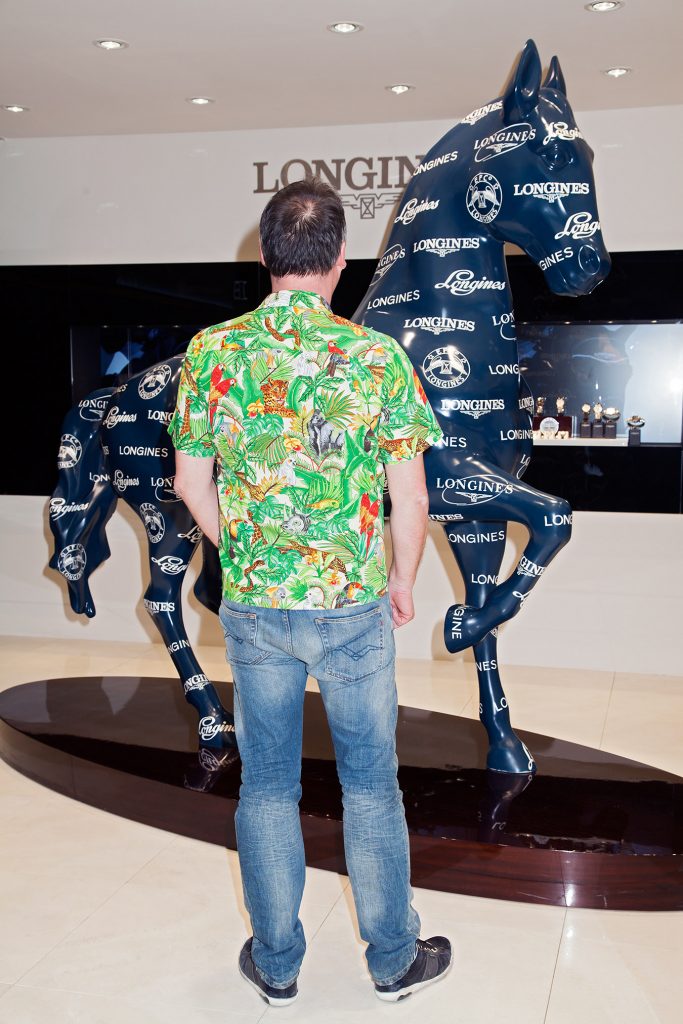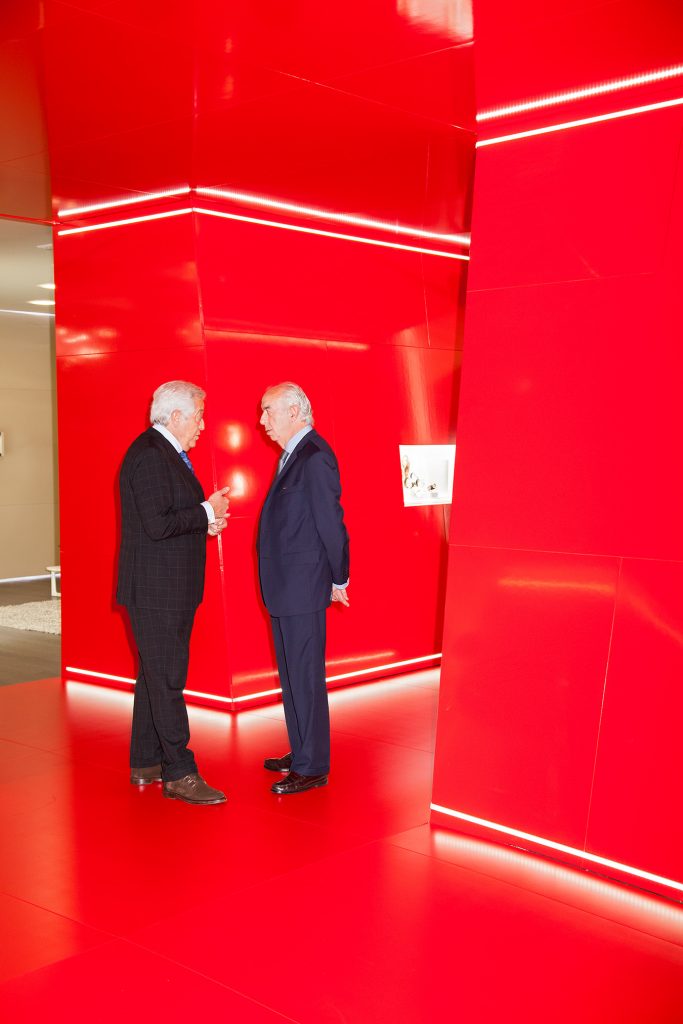Messe Basel, roughly translated as “fair grounds” or in this case, “exhibition halls”, is at the heart of the picturesque, small city of Basel, Switzerland. The Rhine River runs through it, and many suburbs are actually in France and Germany. Architectural wizards Herzog & de Meuron took on the task of redesigning much of the Messe, mainly to accommodate the Art Basel fair, and even more urgently, the biggest, most comprehensive and commercially vibrant watch show on earth, Baselworld.
The city’s main tram lines stop right in the beating heart of Messe Basel, at a stop called City Lounge, an open space encompassed not only by the main exhibition halls, but a magnificent, airy, molded steel apparatus that seems to shift and swirl above. The wavy steel girds also the entire length of Hall 1, which is itself divided into North and South, joined by overhead walkways invisible from outside, but also joined symbiotically by the City Lounge, always abuzz with activity during the fair.
There are four additional halls, which makes it possible for Baselworld to include a multitude of jewellery designers and retailers, along with virtually every company ever known to make a watch. (The only real exception is the Richemont group, which recently decided to hold its own mini-fair in Geneva, a month ahead of Baselworld.)
It is important to understand that all watches are not created equal. Many fashion brands (Fendi, Michael Kors, Salvatore Ferragamo, Gucci), automobile brands (Lamborghini, Ferrari, Jaguar), and multiple other marques include in their overall offerings watches of some kind. They can range from relatively cheap to very steep in price, but generally, these are watches made by watchmaking companies, and then branded appropriately. Style, then, is very much a driving force in the watch world.
Then there are the illustrious, original watchmaking companies, most borne in the 16th and 17th centuries, and all in Switzerland. The Swiss have, in essence, created since those early days a kind of monopoly on the stratosphere of watchmaking and horology, something that persists to this day. Those companies make limited numbers of hand-made timepieces, sometimes even unique, one-of-a-kind pieces, and this is where the stuff of legends is born. Brands at this level include Blancpain, Breguet, Patek Philippe, Girard-Perregaux, Jaquet Droz, among a few others.
Companies such as Bulgari and, even more acutely, Chopard, Chanel, and Harry Winston, have invested in their own Swiss manufacture, and make exquisite pieces also in limited quantities, to accompany the somewhat more widely available pieces. Louis Vuitton has also made this commitment. As part of the Swatch Group, Harry Winston has the further benefit of having access to the technical and production prowess of Blancpain and the distribution and marketing power of Omega. While retaining their own design aesthetics, it seems Harry Winston has the best of all worlds.
The show, then, is a marvel of both commercial enterprise and creative spirit. The exhibition halls are carefully plotted out, and the major brands all erect their own boutique, from scratch, for every new show. These are, for all intents and purposes, fully functioning retail boutiques, but inside, especially among the higher end brands, are luxurious reception areas, with La Marzocco or Nespresso machines, gourmet foods, champagne, and ubiquitous Wi-Fi. And then there are the inner sanctums, where VIP guests from all over the world come to learn about the new lines, new looks, innovations, flourishes, and make their assessments about their own markets back home. So a whole lot of business is transacted over the scant seven days of the fair.
“For a generation or two, we were concerned there would be no one to keep this tradition alive. After all, a watch like this requires 16 months of detailed labour to build. Not everyone is cut out for that kind of work.”
The juggernaut known as Rolex, its three-storey high boutique presiding grandly over the festivities, has window displays that encompass their history, as well as their ability to create new versions of old classics, or pieces completely new. Across the promenade, Patek-Philippe displays an array of exotic timekeeping mantle pieces, each its own work of art. Further down the way, Breguet has an external display of limited edition pieces that begin in the $200,000 Euro range. Jaquet Droz displays a unique piece featuring two gold birds that feed a diamond-encrusted nest full of babies, at the top of every hour.
When these companies say they have made a unique piece, or a limited edition run of 10, or 25, or 100, they mean it. They have to mean it, since value is directly related to volume. Stephen Forsey, watchmaker at Greubel-Forsey, a relative newcomer at the high end of horology, but a force to be reckoned with, shows, for example, a Grand Complications IV, one of only 10 made. “We have had many, many offers, for ridiculous sums of money, to make an eleventh. But the answer is always ‘no’. The 10 are special, unto themselves, and to arbitrarily make more would simply be wrong.” And no doubt it would affect the value of the 10, if an eleventh magically appeared. Reputation is second only to actual quality for these esoteric brands.
Willy Schweizer is conservatuer de patrimoine for Girard-Perregaux, a company started in 1791. He was a master watchmaker, but now is more of a technical advisor, mentor, and keeper of the hallowed traditions of hand-made watchmaking. He holds a Constant Escapement L. M. For 2014, this watch is available in pink gold, and he turns it slowly in his gloved hand before handing it over. “It is not now, nor was it ever, about keeping time. These are pieces that are testament to human endeavour, creativity, and to patience.” He smiles, takes back the watch, sets it gently down. “For a generation or two, we were concerned there would be no one to keep this tradition alive. After all, a watch like this requires 16 months of detailed labour to build. Not everyone is cut out for that kind of work. But, I think we are beginning to attract a younger artisan to the industry now.” He smiles, as if he has just avoided a close call.
This particular watch was awarded the Aiguille d’Or at the Grand Prix d’Horlogerie de Genève in 2013, for its constant force escapement mechanism, the first ever of its kind. The pink gold version for 2014 provides reason for the brand to celebrate such a prestigious award all over again. And it reinforces what Baselworld is all about. There is the high level of commerce being done, certainly. But there is also a celebration of the steep traditions of Swiss watchmaking. New complications are exceedingly rare these days, and when they are announced, the watch world jumps to attention. (A complication is, in fact, anything on a hand-made watch that is not the hour and minute hands on the face of the watch. So, calendars, lunar calendars, compasses, were all early complications. And it became an ongoing challenge for certain brands, certain artisans, to invent something completely new. Jaquet Droz to this day celebrates its first ever new complication, achieved in 1785, by Pierre Jaquet Droz. It was called the Grande Seconde, and magnified the second hand.)
Some, such as Blancpain, valorize classicism and clean design. Others, such as Chopard and Harry Winston, emphasize both design and overt beauty, usually in the form of diamonds, found on the bezel, the face, and even the strap of a watch. Breguet runs a fine balance between the two, while Greubel-Forsey makes it clear they are creating an homage to the old traditions, with every piece they make. It goes a long way to explaining why they can only produce, in total, 100 pieces a year.
Baselworld is a dazzling display, and it is startling to consider just how many watches are made, marketed, and sold in the world every day. And just when you think you have a handle on it, something else catches your eye, your attention. So many watches, so little time.



